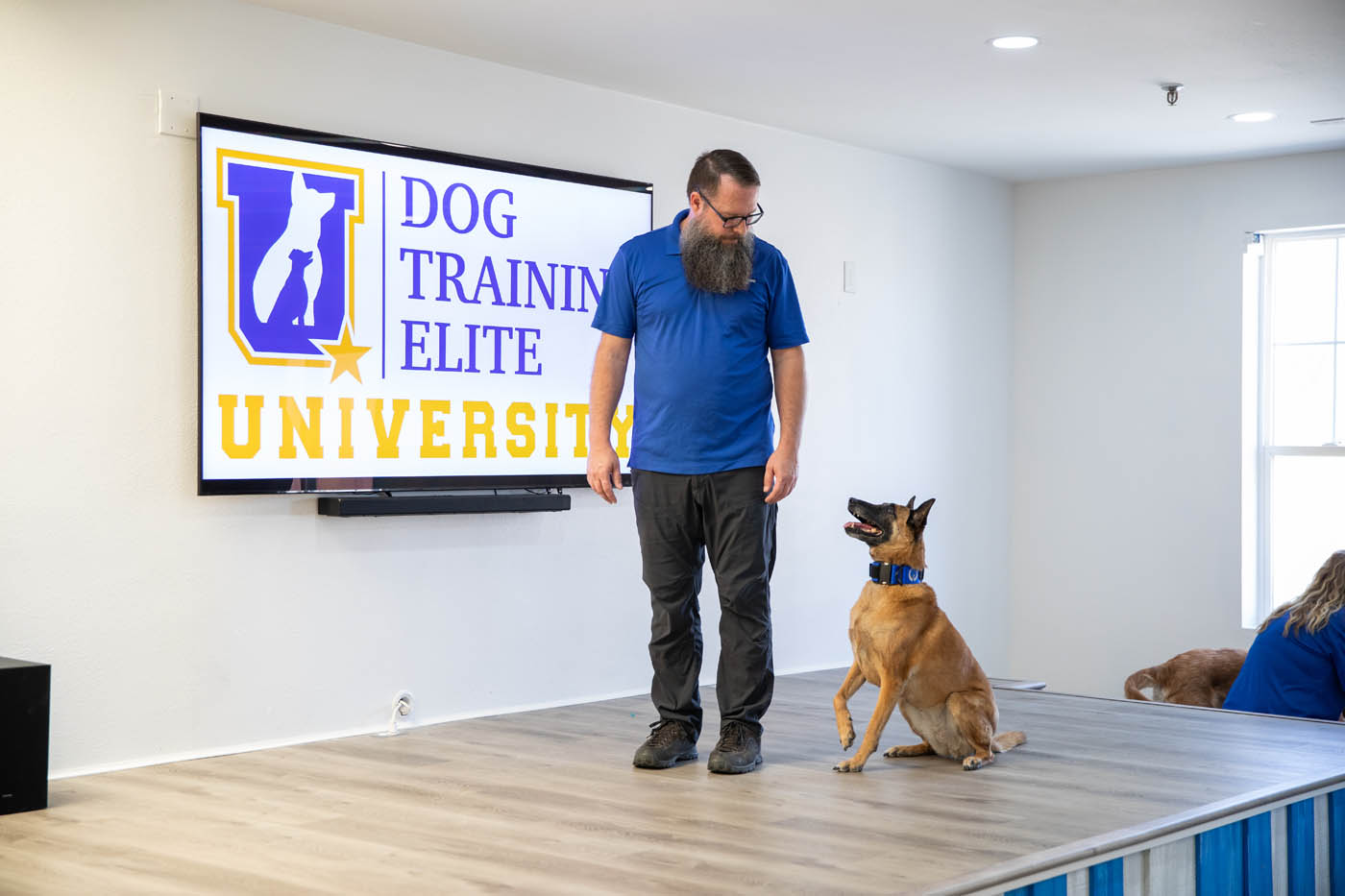Elevate Your Abilities with Local Dog Training Charlotte Programs
Elevate Your Abilities with Local Dog Training Charlotte Programs
Blog Article
Unlock Your Canine's Prospective: Proven Pet Training Techniques for Success
Reliable dog training is a nuanced procedure that pivots on understanding canine actions and employing medically backed methods. By integrating positive support, developing clear commands, and focusing on socialization, pet dog owners can grow an effective relationship with their pet dogs.
Understanding Pet Behavior
Understanding dog actions is necessary for reliable training and cultivating a favorable relationship in between pet dogs and their owners. An extensive understanding of canine body language, vocalizations, and social communications is important for identifying their needs and emotions. Pets interact mainly via non-verbal cues; for instance, a wagging tail may show excitement, while pinned ears can signify worry or entry.

Furthermore, ecological variables play a significant function fit a dog's actions. Adjustments in routine, new environments, or the visibility of unfamiliar people can result in anxiety or anxiety in dogs. Recognizing these triggers enables owners to minimize unfavorable reactions and establish proper training methods.
Inevitably, a deep understanding of canine behavior lays the foundation for effective training methods, boosting both habits and the total bond between the canine and its owner. dog training charlotte. This knowledge is essential for cultivating a well-adjusted, delighted canine friend
Favorable Reinforcement Techniques
Reliable training depends heavily on favorable reinforcement strategies, which have been shown to generate considerable lead to shaping wanted actions in pet dogs. This approach involves compensating a canine for displaying particular habits, consequently raising the likelihood that these habits will certainly be duplicated. Benefits can take different forms, consisting of treats, appreciation, toys, or playtime, depending upon what motivates the specific dog.

It is vital to gradually eliminate benefits as the canine finds out the behavior, transitioning to intermittent support. This strategy preserves the actions over time while preventing reliance on consistent rewards. By concentrating on positive support, trainers can cultivate a relying on relationship with their canines, promoting a healthy and balanced and participating training atmosphere that boosts overall obedience and efficiency.
Developing Consistent Commands
A basic facet of effective canine training is the facility of regular commands. Consistency in commands is critical for effective communication between the canine and the trainer. When commands are consistent, canines learn to connect details words with preferred behaviors, which increases the training procedure and boosts understanding.
To establish constant commands, it is crucial that all member of the family utilize the exact same terms and motions. If one person utilizes "sit" while an additional states "sit down," it can site link develop complication for the dog. Select Read Full Report clear, distinct words for commands and guarantee everybody associated with the pet dog's training follows these selections.
Reinforce commands through regular technique, making sure that the canine obtains adequate possibilities to respond appropriately. When a canine effectively adheres to a command, prompt favorable reinforcement should adhere to.
Finally, hold your horses. Developing consistent commands takes some time and initiative. With devotion and quality, you will certainly help your pet create a strong understanding of assumptions, eventually leading to a mannerly companion.
Socializing and Direct Exposure
Mingling a dog is vital for cultivating a well-adjusted and certain companion. This procedure entails exposing your canine to a selection of settings, individuals, and other animals to develop their social abilities and versatility. Early socialization, ideally in between the ages of 3 to fourteen weeks, is crucial, as it prepares for a pet's future habits.
During socialization, purpose to give favorable experiences in various setups, such as parks, active streets, and homes with other pets. Introduce your canine to numerous stimuli, including sounds, views, and smells, ensuring that each encounter is gratifying. This exposure helps minimize concern and stress and anxiety, leading the method for a much more durable dog.
Engaging in regulated team play sessions with other canines can also enhance social abilities, educating your animal proper interactions and limits. Prioritizing socializing will substantially add to your canine's general joy and habits throughout their life.
Conquering Common Educating Obstacles

Pet dogs may battle to concentrate in hectic or unfamiliar setups. Slowly desensitize your dog to distractions by starting training in a peaceful environment and gradually presenting try these out even more stimuli as they come to be proficient.
In addition, behavior problems like jumping or excessive barking can end up being irritating. Address these by educating alternate habits, such as resting calmly when greeting guests. Consistency and persistence are essential; reinforce wanted actions constantly and prevent scolding, which can lead to complication.
Last but not least, identify that each pet dog is special, and training timelines may differ. Tailor your method to your pet dog's private demands, and seek expert advice if required. With determination and the appropriate methods, overcoming these obstacles can result in a trained, delighted canine companion.
Conclusion
Finally, unlocking a pet dog's possible requires a comprehensive strategy that includes an understanding of canine habits, the application of positive reinforcement methods, and the establishment of consistent commands. Early socializing and exposure to varied settings further improve a pet dog's versatility and self-confidence. By dealing with typical training obstacles with customized approaches and perseverance, a harmonious and cooperative relationship between dog and handler can be cultivated, eventually causing a mannerly friend qualified of prospering in different circumstances.
Efficient pet training is a nuanced procedure that hinges on understanding canine behavior and using clinically backed approaches.Understanding canine actions is crucial for efficient training and cultivating a positive partnership between canines and their proprietors.Effective training relies greatly on positive support techniques, which have actually been shown to generate considerable outcomes in forming desired habits in canines. When commands are uniform, canines find out to connect details words with wanted actions, which increases the training procedure and boosts understanding.
In conclusion, unlocking a pet's possible necessitates a thorough strategy that includes an understanding of canine actions, the application of positive reinforcement techniques, and the establishment of constant commands.
Report this page